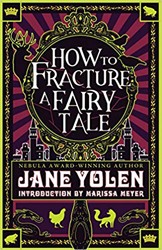There are many children’s picture books that embed a Jewish teaching in an illustrated text, offering both a moral lesson and an appealing work of art. Nuri and the Whale takes a slightly different approach. Ronit Chacham extrapolates on a short selection from the biblical book of Kohelet (Ecclesiastes), dividing the narrative into numbered chapters and implicitly challenging the divide between picture and chapter books. Moran Yogev’s lavish illustrations allude to Middle Eastern artistic traditions and present convincing characters who speak to young readers on their own level. This exceptional book does not simplify its message of generosity and intergenerational respect, but rather brings it to life as a core tzedakah.
Is the completion of a mitzvah contingent on fully understanding its meaning? While this question may confound even adults, it is almost bound to come up when teaching young children. Chacham confronts the issue as Nuri, a young boy, responds to hearing his father quote the verse, “Cast your bread on the water, and one day it will come back to you” (Kohelet 11:1). Naturally, he interprets its somewhat enigmatic language literally, throwing bread into the sea until one fish grows unnaturally large. When his well-intentioned act results in conflict, he is confused. Fortunately, Wisewhale, an archetypal paternal figure, takes the time to explain to Nuri the difference between obedience to his father and true comprehension. He does this not through direct instruction, but by encouraging Nuri to draw inferences. Wisewhale thus sets the boy on the right path, reminding him that “there will be days to come when you will give and take — and you will be both happy and sad.”
Nuri and the Whale notably combines biblical and Talmudic stories with Jewish folklore. Children may not immediately associate Nuri’s tale with that of Jonah, caught in the belly of the great fish, or with the legendary Joseph, who loved the Sabbath and shared his wealth with his whole community. Nevertheless, these parallels situate Chacham’s and Yogev’s work in the larger realm of Jewish literature.
The book’s illustrations and design also display a deep immersion in Jewish artistic heritage. One two-page spread features the quote from Kohelet in Hebrew calligraphy, while the floral border around each picture recalls medieval manuscripts. Word bubbles with variously colored fonts elaborate on the main text, and a range of color tones connects characters and scenery — from people, to animals, to the natural habitat they share.
When the book concludes, Nuri is an old man. Along the way, readers learn that people develop and change, and that both the young and old play distinct roles in Jewish life. Giving to others is not only a requirement for those with great wealth, as Nuri points out, because “Sometimes in life you’ll have everything and sometimes you’ll have almost nothing.” It’s a message worth conveying to children, especially in a book as enchanting as this one.
Emily Schneider writes about literature, feminism, and culture for Tablet, The Forward, The Horn Book, and other publications, and writes about children’s books on her blog. She has a Ph.D. in Romance Languages and Literatures.





